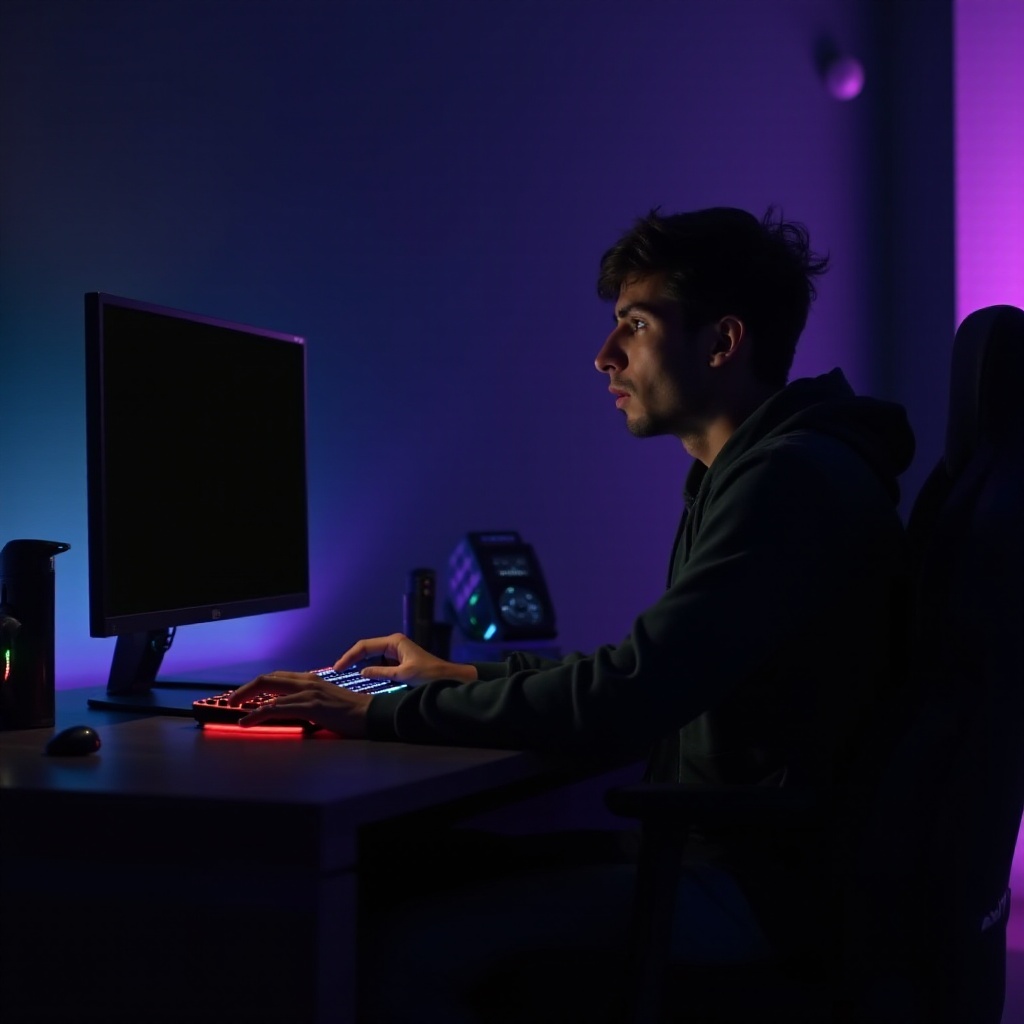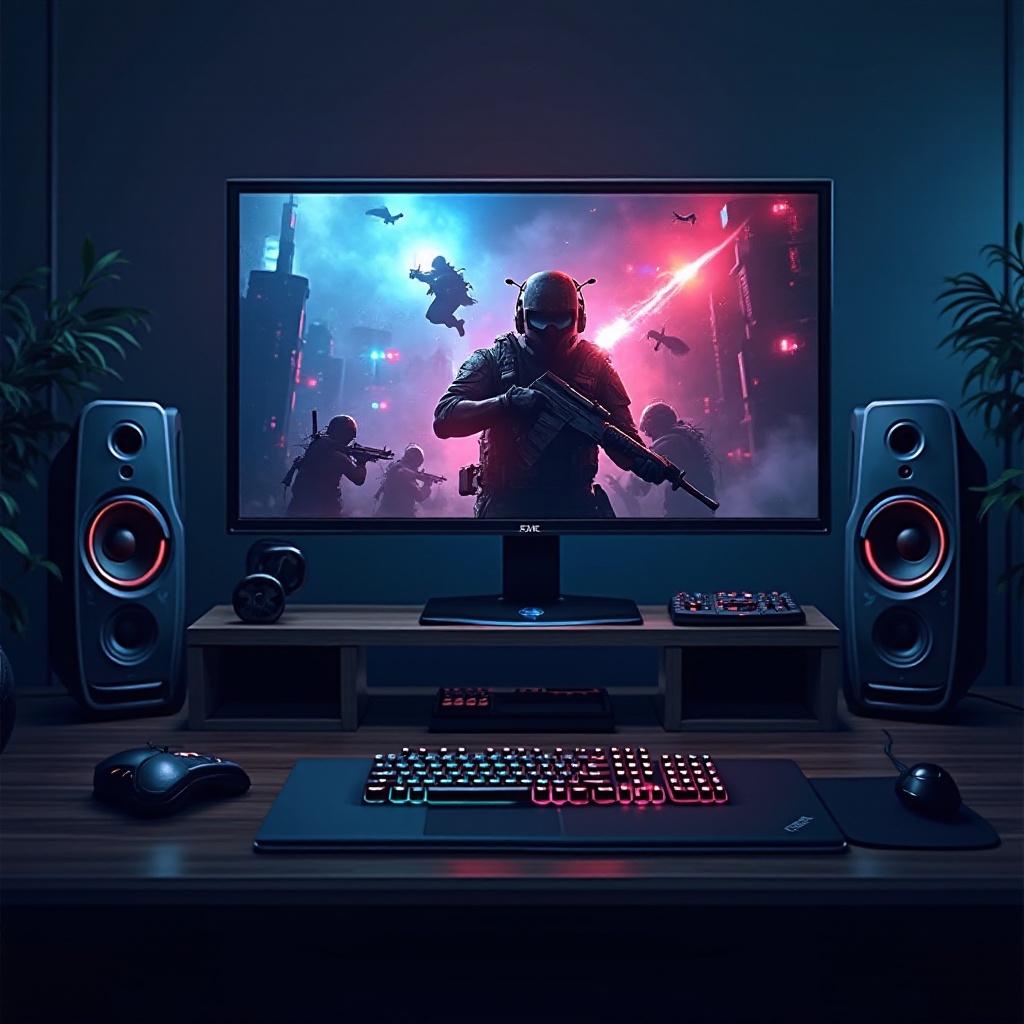Introduction
Experiencing a monitor blacking out during gaming can be a major frustration for gamers. This issue not only interrupts the game but can also be highly detrimental to your gaming performance, making you miss critical in-game moments. The key to resolving this challenge lies in understanding the potential causes and implementing effective solutions. This comprehensive guide delves into the typical reasons behind screen blackouts, offers practical hardware and software remedies, introduces advanced troubleshooting methods, and suggests preventive measures to ensure your gaming remains uninterrupted.

Common Causes of Monitor Blackouts
Several factors contribute to a monitor going black during gaming, ranging from hardware malfunctions to software glitches. Here are the primary culprits:
Loose or Faulty Cables
One of the simplest but often overlooked causes is a loose or defective cable connection between your computer and monitor, which can interrupt the video signal temporarily.
Outdated Graphics Drivers
Graphics drivers act as a communication bridge between your system’s graphics card and monitor. If outdated, they may cause blackouts due to compatibility issues during gaming.
Overheating Issues
Overheating is another prevalent cause. When your PC’s components overheat, they can malfunction, resulting in your monitor briefly going black. Keeping your system cool during gaming is crucial.
Understanding these root causes paves the way for effective solutions, starting with hardware interventions.
Hardware Solutions
Addressing monitor blackouts often begins with hardware checks and adjustments. Focus on ensuring all equipment and connections function correctly.
Check and Secure Connections
Secure all connections and inspect for loose ports or bent pins to ensure longevity and functionality.
- Make certain cables are tightly secured at both ends.
- Reconnect and confirm snug fits on any loose cables.
Test Different Hardware Configurations
Sometimes, experimenting with your hardware setup can reveal problem components. Try swapping out monitors, graphics cards, or cables to locate faulty parts.
- Connect a different monitor to see if the problem persists.
- Try another graphics card to determine if yours is defective.
Inspect and Replace Cables
Even small damage to cables can lead to issues.
- Check for visible damage like fraying or kinks.
- Replace damaged cables with new, reliable ones.
After confirming your hardware is in good shape, turn to software fixes to tackle the problem.
Software Solutions
Software issues can also cause monitor blackouts. Resolve these with the following strategies:
Update Your Graphics Drivers
Up-to-date drivers are essential for avoiding conflicts and ensuring stability.
- Visit the graphics card manufacturer’s site.
- Download and install the latest drivers compatible with your hardware.
Adjust Graphics Settings
Sometimes, high graphical settings overwhelm your system.
- Lower the game’s resolution and reduce visual effects via the game settings.
- Experiment with these settings to achieve a stable performance level.
Modify Power Management Options
Display performance can be affected by your system’s power settings.
- Navigate to the power options in the control panel.
- Opt for high-performance settings or custom plans that prioritize display.
With software issues checked, persistent problems may require more advanced troubleshooting.
Advanced Troubleshooting Techniques
For stubborn blackouts, advanced troubleshooting might be required. This includes checking for system overloads and malware, among other strategies.
System Overload and Resolution Adjustments
Overloading your system affects performance.
- Close any unnecessary applications running in the background.
- Decrease screen resolution to minimize system demand.
Check for Malware and Viruses
Security threats can also degrade performance.
- Perform full antivirus and anti-malware scans to detect issues.
- Eliminate any dangerous software found to restore optimal performance.
Reseat GPU and Other Components
Sometimes, it’s necessary to reinstall physical components.
- Completely shut down your system.
- Carefully remove, inspect, and then reseat the graphics cards and RAM.
Once these measures are in place, make use of preventive techniques to maintain smooth gaming.
Preventative Tips for a Stable Gaming Experience
To minimize future issues, implement these preventive strategies:
Regular Software Updates and Maintenance
Staying updated ensures long-term stability.
- Schedule regular updates for all software and drivers.
- Conduct systematic maintenance checks to prevent glitches.
Proper Monitor and PC Setup
An optimized physical setup reduces disruptions.
- Position all components in a ventilated area.
- Use stable stands and mounts to avoid accidental damage.
Cooling and Ventilation Strategies
Preventive cooling measures can minimize overheating.
- Employ efficient cooling fans and clean air vents routinely.
- Add extra cooling solutions if necessary for enhanced airflow.
Incorporating these preventive techniques should significantly reduce or eliminate gaming blackouts.

Conclusion
While gaming blackouts are frustrating, they are manageable with proper attention to the underlying issues. From securing cables and updating drivers to adjusting hardware and software components, there are numerous steps you can take to enhance your gaming session. By utilizing advanced troubleshooting techniques and consistent preventive measures, you can maintain long-term stability and enjoy interruption-free gaming. The strategies outlined here not only resolve existing problems but also transform your gaming experience into one of seamless enjoyment.
Frequently Asked Questions
Can a faulty cable really cause my monitor to go black?
Yes, a faulty cable can interrupt the video signal between your monitor and computer, causing the screen to go black temporarily during gameplay.
How often should I update my graphics drivers?
You should check for updates monthly or as new game releases require. Regular updates ensure compatibility and optimal performance.
What is the ideal temperature range for my PC while gaming?
An ideal temperature range is between 60-80°C (140-176°F). Keeping within this range prevents overheating, maintaining stable performance.